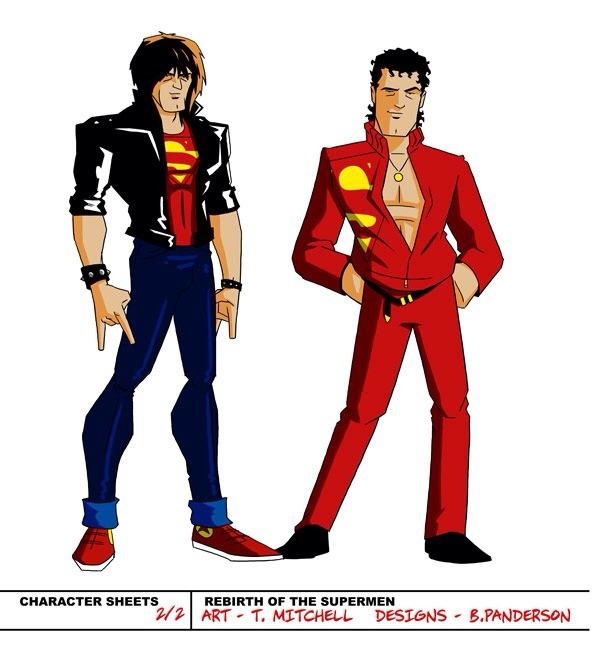You know what should sit at the heart of all superhero stories? Not the goddamn spandex, that’s for sure. Not the silly codenames, asinine motivations and juvenile team-ups. No, the heart of all superhero stories – correct that, all good superhero stories – is awe. Superheroes take the best of humanity and kick it up to 120%. All the good deeds that we mere mortals do in everyday life – and we do a lot of them, there are plenty of inspiring stories out there – are but a dust-mote next to the amazing feats that a superhero can perform. A good superhero story moves us, gives us a model of what it truly is to be strong, brave and bold. Characters like these are legends. Super-human, super-real.
I’d crafted the ultimate Superman story. Clark Kent, apparently dead of a broken heart. Four heroes – copies and imitations, to be sure, but imperfect reflections of true greatness still remain fantastic – arise to take Superman’s place. A villain from outside space and time, a twisted mirror of our true hero, threatens to bring the entire world under his control. The heroes fight, the heroes fall.
And then like a miracle, the Last Son of Krypton returned to save us all. Continue reading
